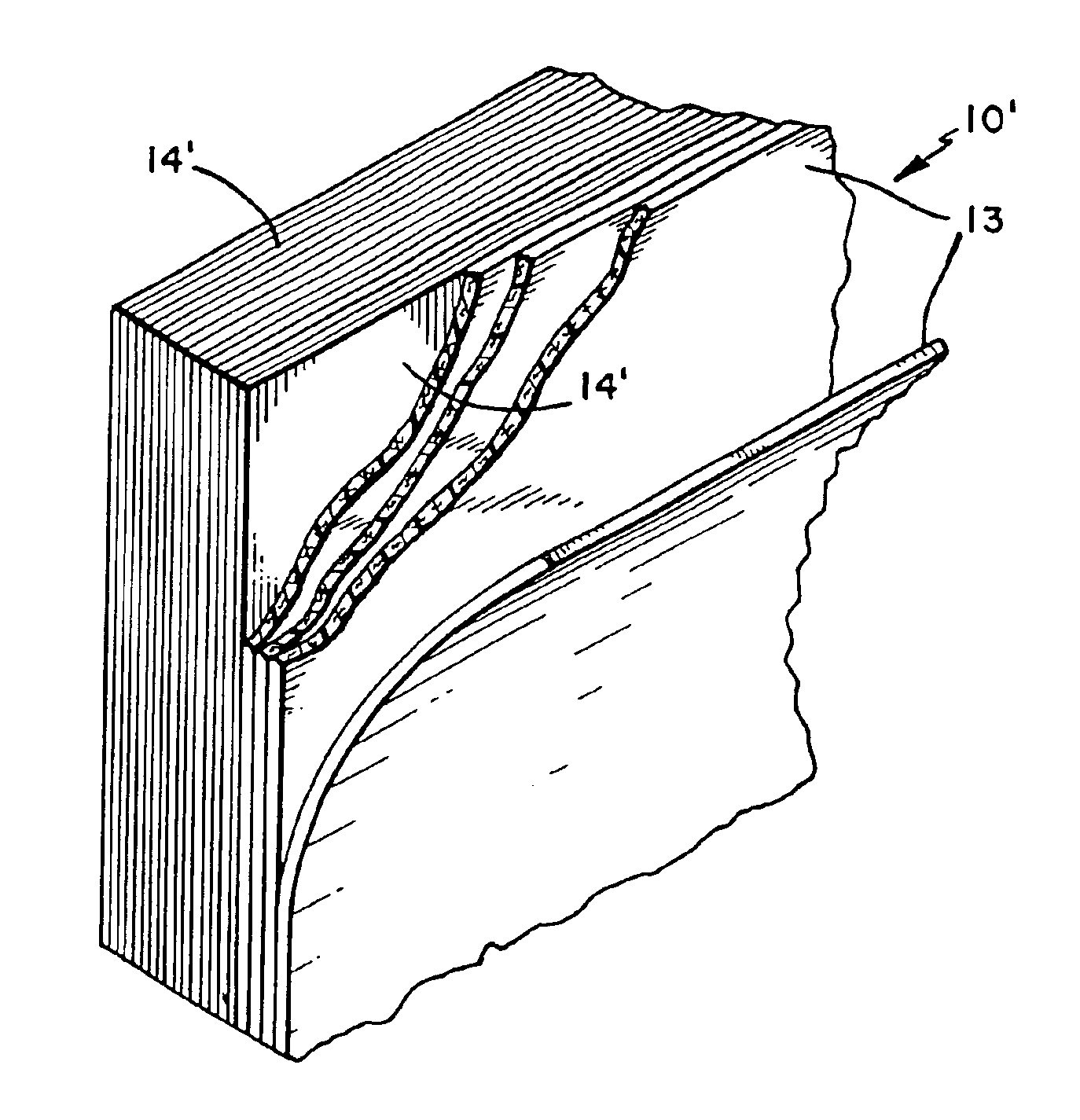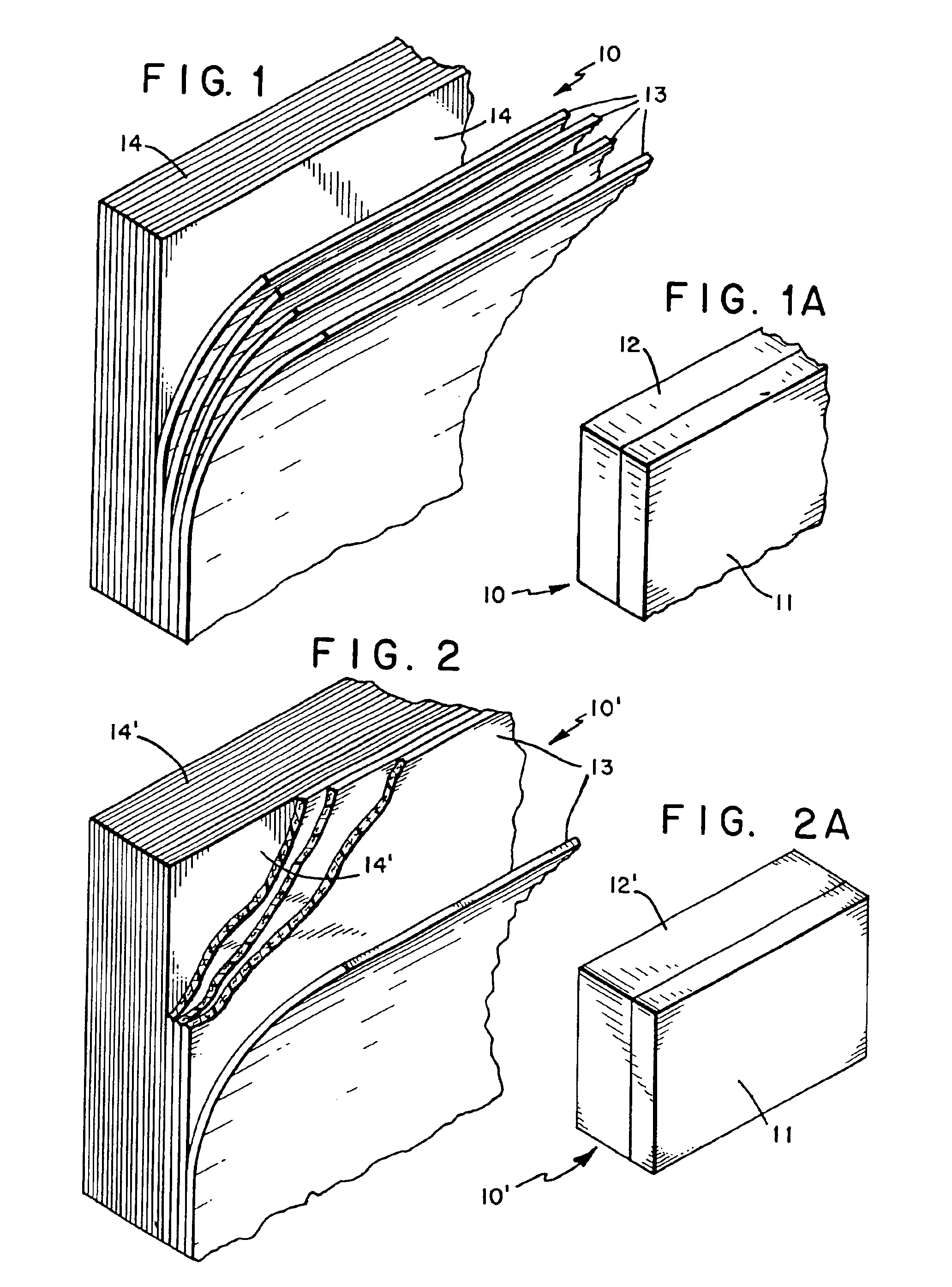Armor systems
a technology of armor system and armor shield, which is applied in the direction of protective fabrics, braids, weaving, etc., can solve the problems of affecting the performance of armor shields, etc., and achieves the effect of higher performan
- Summary
- Abstract
- Description
- Claims
- Application Information
AI Technical Summary
Benefits of technology
Problems solved by technology
Method used
Image
Examples
examples 1-2 (comparative)
[0076]In Example 1, 32 networks of Spectra® 1000 8H satin weave fabric style 985, commercially available from Allied-Signal Corporation, were stitched together in a diamond shape pattern to produce a test sample having an areal density of 176 oz / yd2 (1.22 lb / ft2). In Example 2, a 25 network system was produced just as in Example 1, but having an areal density of 138 oz / yd2 (0.960 lb / ft2).
[0077]Both of these systems were submitted to a 22 caliber 17 grain FSP evaluation test according to MIL-STD-662E. In Example 1, a V50 value of 1797 fps was obtained, while in Example 2, a V50 value of 1611 fps was obtained. Visual observation of the non-impact side of these samples revealed significant deformation (or deflection) of each of the systems.
examples 3 (comparative)
-4
[0078]One layer was comprised of 5 felt networks each having an areal density of about 8 oz / yd2 (0.0556 lbs / ft2) and having a needle punch density of about 500 punches per square inch. The fiber used in these felt networks was Spectra® 1000 2.75 inch (7.0 cm) staple, commercially available from Allied-Signal Corporation. The fiber was carded and cross lapped to a 60 inch (1.52 m) width. The carded webs were stacked up by the cross lapper to produce an 8.0 ounce per square yard fabric, as is known in the art. The fabric was tacked and needled (300 punches per square inch with a #10 needle), and then taken up into a roll. The off line needle punching used a #100 needle and a needle punch density of 200 punches per square inch.
[0079]The other layer was comprised of 20 networks of Spectra® 1000 8H satin weave fabric style 985, commercially available from Allied-Signal Corporation, and having an areal density / weight? of about 5.5 oz / yd2 (0.038 lb / ft2).
[0080]The two layers were stitched...
example 10
[0088]One layer was comprised of 4 felt networks each having an areal density of about 5 oz / yd2 (0.0345 lb / ft2) and having a needle punch density of about 500 punches per square inch, as previously described. The fiber used in these felt networks was Spectra® 1000 2.75 inch (7.0 cm) staple, commercially available from Allied-Signal Corporation.
[0089]The other layer was comprised of 17 networks of Spectra® 900 basket weave (8×8) fabric style 913, commercially available from Allied-Signal Corporation, and each having an areal density of about 15.5 oz / yd2 (0.106 lb / ft2). The total areal density for the system was 1.97 lb / ft2.
[0090]These two layers were formed into a system for testing, and the felt layer was facing the incoming projectile. At level 2, this system performed better than Example 9 above, and without significant deformation.
PUM
| Property | Measurement | Unit |
|---|---|---|
| length | aaaaa | aaaaa |
| length | aaaaa | aaaaa |
| ballistic limit velocity | aaaaa | aaaaa |
Abstract
Description
Claims
Application Information
 Login to View More
Login to View More - R&D
- Intellectual Property
- Life Sciences
- Materials
- Tech Scout
- Unparalleled Data Quality
- Higher Quality Content
- 60% Fewer Hallucinations
Browse by: Latest US Patents, China's latest patents, Technical Efficacy Thesaurus, Application Domain, Technology Topic, Popular Technical Reports.
© 2025 PatSnap. All rights reserved.Legal|Privacy policy|Modern Slavery Act Transparency Statement|Sitemap|About US| Contact US: help@patsnap.com



